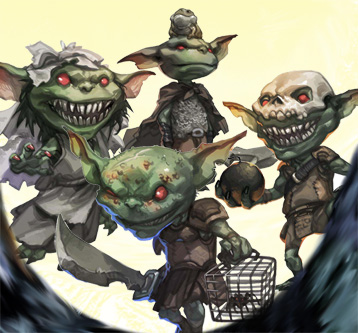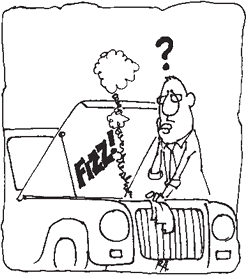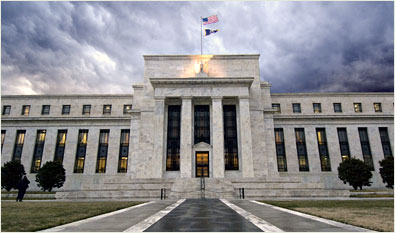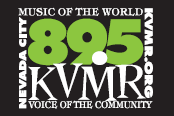
Money Matters update September 28, 2016

DECK COATING AND PAINTING BY KYLE. Check out the flyer above!
Halloween Market Goblins

Jambo and good day!
Money Matters airs Thursday October 6th, noon PST on KVMR FM and worldwide on KVMR.ORG and MONEYMANAGEMENTRADIO.COM. “Halloween Markets and what to expect”.
Yesterday was my first article in the Auburn Journal. From now on look for me bi-monthly. Also look for Money Matters articles in Auburn, Rocklin, Lincoln, Roseville and beyond soon. The option to appear in more of their papers is open. I look forward to spreading the message even further. If anyone finds a Money Matters article in a paper down the hill besides the Union, Territorial or Auburn Journal, let me know. I will send you a free T shirt!
As a result of a trip I took so Southern California in the spring, a Los Angeles station and I have reached a tentative agreement to air Money Matters in that area. Moving along nicely.
Another financial service should be available soon from my office in Auburn. I am in the midst of establishing a new certification. Stay tuned for more on that in the weeks to come.
Wish to meet and discuss your portfolio? Email me for a no cost- no obligation one on one sit down. mcuniberti@cambridgesecure.com
-----------------------------

TURKEY MATTERS IN FULL SWING
Can I count on you? Can our hungry count on you? Let’s do it!
Its time again for our Turkey Matters food drive for the food banks of our counties.
Help me feed the poor with our annual turkey drive where we buy turkeys for the poor. I do this every year and now ask for community support. The program is easy. Just make a check out to the food bank of your choice. Do not make the check out to KVMR or me. Make it out to the food bank of your choice.
Mail: KVMR FM 120 Bridge Street, Nevada City, Ca 95959. Attention Turkey Matters.
I will match a portion of the funds with my own money to that food bank and KVMR will forward my check and yours to that food bank. That’s all there is too it.Turkey Matters is now in full gobble gear so ladies and gentlemen, start your envelopes!
--------------------------------------

Reliance
Do you rely on something or someone?
All things interact with all things in some way or another. But just how dependent in degree is subject to will, desire, necessity, symbiosis, nature herself and other factors. Knowing the things we cannot change is one element of successful outcomes in one’s personal and business life. Outcome dependency can be more mechanical when it comes to things like keeping a roof in good repair to stay dry, not smoking to stay healthier and not driving too fast to stay alive. But other dependencies are not so easy to identify, and even when identified, not so easy to alter.
“There are healthy and unhealthy dependencies, good and bad outcomes, many of which happen by the personal choices we make”
There are healthy and unhealthy dependencies, good and bad outcomes, many of which happen by the personal choices we make. Even in investing, our outcome may or may not be in direct correlation with the decisions we made. If an unexpected news item is negative, the price of a stock may be hit with no fault on the part of the investor. It was a previously unexpected news item. However if we failed to look at the books of a company we bought stock in and the company eventually fails due to those books, that was an outcome we SHOULD have seen.
In a general attempt to improve your situation whether in business or in life, identify the outcomes you have control over and the ones you do not.
Are your prejudices getting in the way? Preconceived notions or just plain stubbornness? Are you dependent on people or things you should not be? Is there too much dependency? Can you switch a dependency from one thing or person to another to improve the odds of a successful outcome?
“Remember, you came into this world alone and alone you shall go out of it”
Remember, you came into this world alone and alone you shall go out of it. What that means is your interaction with the world is just that, your interaction with it, but it is your sole interaction with it the point being made here.
You are an individual and will always be solely alone on the most basic of levels. Realize you can only enhance the world and the people in it. You cannot become one with it. You cannot merge with it. You only interact with it. This realization puts in perspective what you value, who you value and the true nature of what it is you are doing and what it is you are trying to accomplish.
How you interact with people or the world around you should always be regarded as YOU interacting with THEM and not a merging of the two. Two people cannot merge into one just as two physical things cannot merge into one. An outcome desired is not an outcome that may happen just because you will it. Dependency on external forces and other things will always effect what happens because of cause and effect, because of dependency.
To better comprehend what happens to you as you interact with the world around you, be aware of your dependencies. In other words, who are you dependent on and are you too dependent. What are you dependent on and is that the wisest of choices. What shouldn’t you be dependent on and what makes no difference.
And above all, are the things and people you are dependent on right now the best of choices. It is never possible to enhance one’s dependencies to perfection but knowing what you can and cannot change and just how outside people and things effect what happens to you starts with a subjective look inside and seeing what and who is really around you.
Life, as in business, is a constant reevaluation and altering of paths as you go, not just a stumbling forward.
----------------------------------

Last week’s long awaited meeting of the Federal Reserve yielded what the majority of economists expected. No increase in the federal funds rate yet again. The last increase, in fact the only increase since 2006, took place in December of 2015 which may have sparked the massive sell off in equity markets in January 2016.
Many theorized that with the upcoming election the Fed would not increase the rate during last week so not spark a market sell off right before the election. Fed Chief Janet Yellen is a Democrat and although politics are not supposed to play a part in monetary policy from the Fed, one could draw another conclusion.
No matter what the conspiracy buffs may think about the Feds playing political football, the Fed statement allayed that suspicion by saying:
“Near-term risks to the economic outlook appear roughly balanced. The Committee judges that the case for an increase in the federal funds rate has strengthened but decided, for the time being, to wait for further evidence of continued progress toward its objectives. Our decision does not reflect a lack of confidence in the economy”.
In plain English one could decipher the Fed speak as “things look to be getting better but we are still being cautious”.
Of the members voting, three members dissented and voted for an increase. This was the largest split vote in years.
For an indication of future direction in the rates, experts also reviewed the so called “dot plot”, which is published after each Fed meeting. This graph shows the projections of the 16 members (some of which do not vote at each meeting) of the Federal Open Market Committee as to where interest rates may be in the future. Market participants look at this graph to arrive at some sort of opinion as to what the Feds may do at subsequent upcoming policy meetings.
Currently, the members' average expectation is for rates to hit 1.27% at the end of 2015, 2.68% in 2016, 3.54% in 2017, and 3.79% in the long run. The current target for the fed funds rate is 0 - 0.25% which is a long ways from the dot plot viewed after last week’s meeting.
Keep in mind the Fed is data dependent and they can and have changed their view repeatedly as economic measurements trickle in.
No matter what the Feds do at their next rate setting meeting in December, fixed income investors and retirees living on savings no doubt were not thrilled with no increase yet again. If the Feds decide to start a consistent pattern of rate increases in accordance with the dot plot, investors counting on interest income to pay their bills could finally start to see some hope in an otherwise dismal environment.
-----------------------
Bonds are IOU’s. You loan someone their money and in return you get the IOU (the bond).
They have infinite possibilities as to the terms which states what you get back, when you get it back, what collateral (if any) you may have, any interest rate you may get and just about anything else one might see fit to include. The most common bonds are issued by sovereign governments, states, municipalities and corporations. They can be insured or otherwise.
Unlike stocks, bonds are what I call linear investments.
Where stocks can rise or fall as they have no “face” value and investors can lose money based on that movement, bonds have a definite face value.
A $100 bond always states $100 as its face value. If an investor sells a bond before its maturity date (the date it is paid), the actual price one can sell it for can rise or fall. If an investor keeps the bond until it matures, the face value is what is paid. A $100 bond will pay $100. Any interest one might make (known as it coupon rate) can be paid throughout the bonds life (like yearly or otherwise) or it can be paid all at once when the bond is paid.
I call them linear investments because the face value of the bond remains the same, and if the bond is held to maturity, this value does not change unlike a stock price which can change daily. Stocks have no face value printed on them unlike a bond which does.
The end result from owning a bond is you either get paid or you don’t which is why I call them linear. Its value is a straight line. $100 in equals $100 out assuming you get paid of course. An issuer of a bond that can’t pay is said to be in default and the investor can lose his money. The reason for default would likely be lack of funds. They borrower simply does not have the money to pay. If the bond goes into default, many things can happen, most of them bad.
The issuer can offer to renegotiate the bond and partially pay what it owes whereby the investor gets only some of his money back or the bond can be rolled over which means the maturity date is redrawn to a later date by issuing a new bond with a new maturity date and perhaps new terms and conditions. A flat out total default means the investor gets nothing. If the bond is insured the insurer would be on the hook for the payment. If not, the investor might seek relief by way of the judicial `system` or wait in line if the borrow declares bankruptcy which on a defaulted issuer is highly likely if it can’t renegotiate with its bond holders.
Bonds are commonly referred to as fixed income investments which means their yield can be somewhat predictable unless the bond terms are broken by the issuer. Bonds can be a way to diversify a portfolio and provide a source of predictable income.
As in most investments bonds have inherent risks. Investors should read the prospectus and financial sheets of the issuing entity, understand completely the terms and conditions of any debt instruments they are considering and consult an investment professional before investing.







